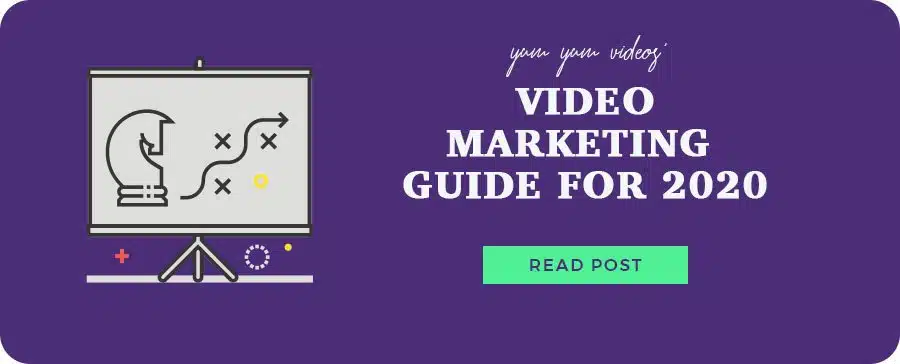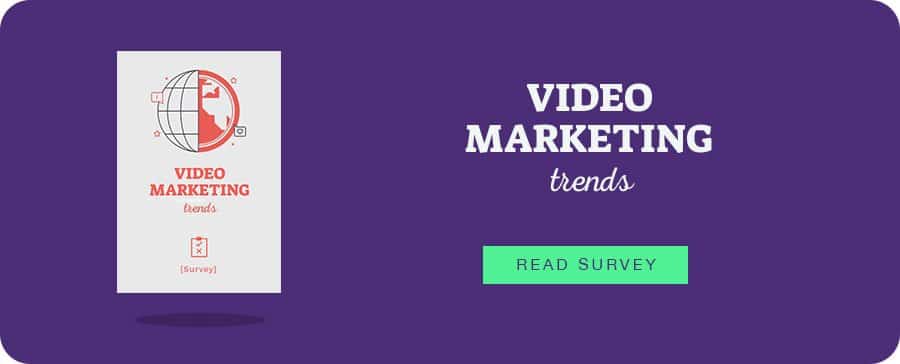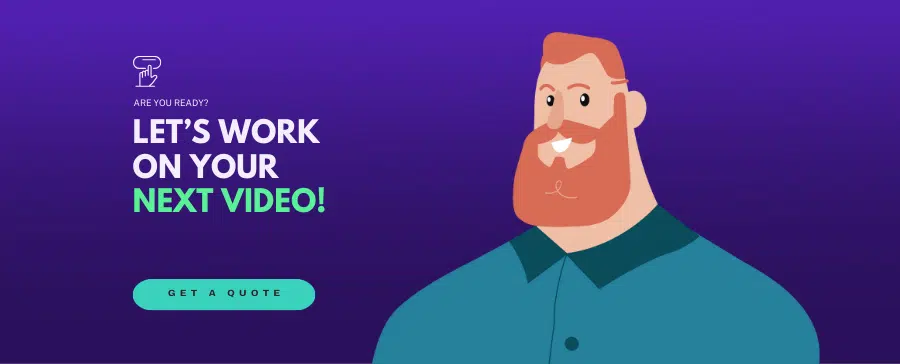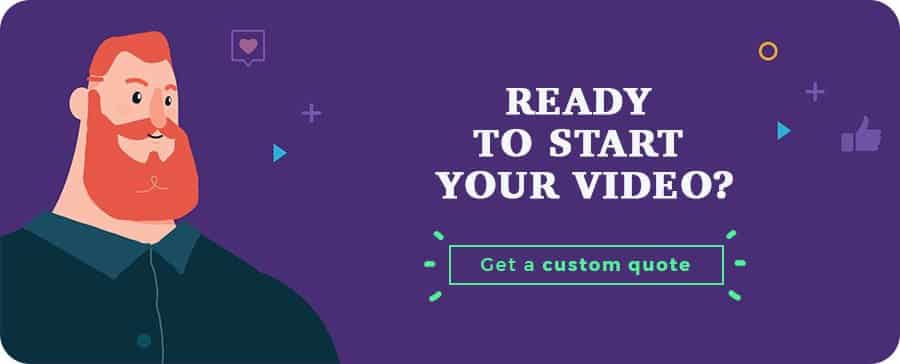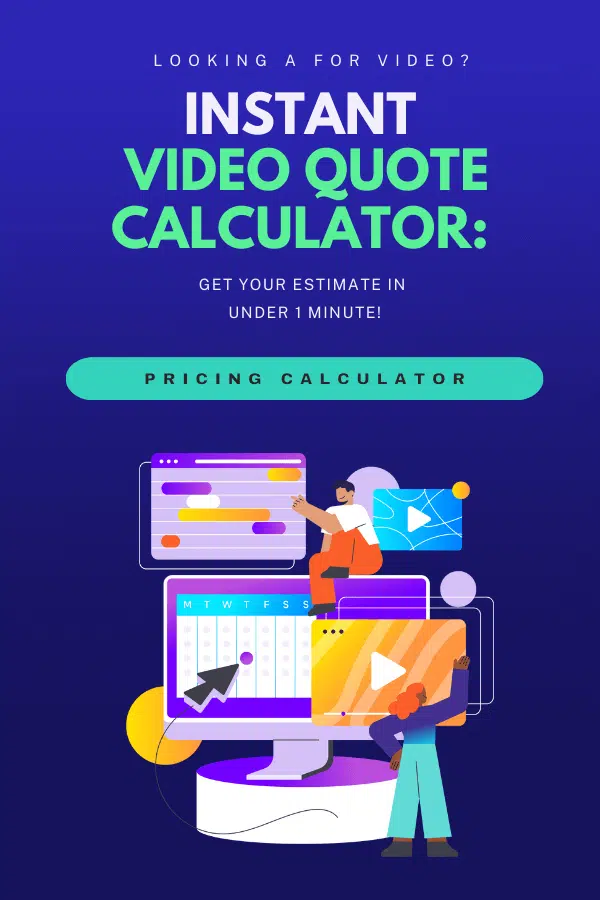Top Online Learning Videos and E-learning Statistics to Boost Your Strategy

Written by Victor Blasco
CEO of Yum Yum Videos
08/11/24
Author: Victor Blasco
15 min reading
MarketingStrategy
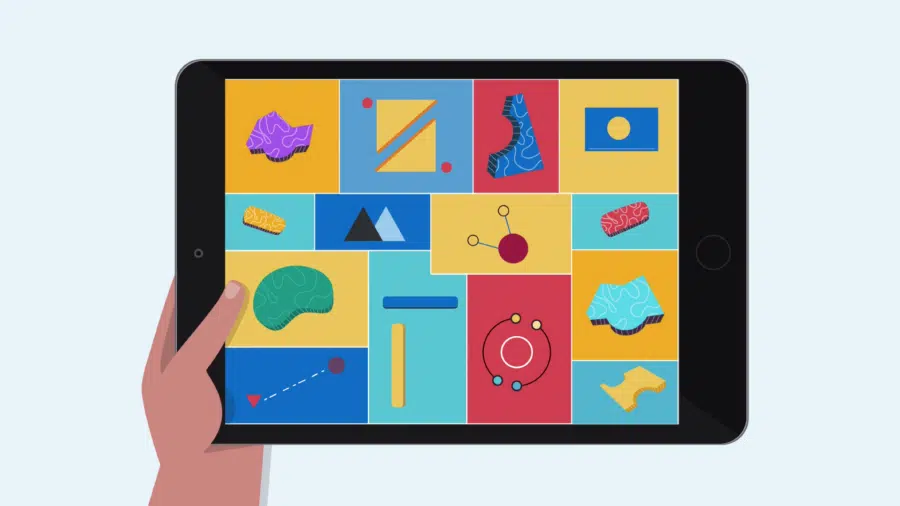
If we are talking content marketing, one of the most effective assets in your toolbelt is online learning video content. Not only because you are appealing directly to your potential customer’s needs and pain points but because you’d be delivering immediately valuable and useful information to the viewer.
If you are doing it right, at least.
Don’t get me wrong; most people in the business these days have at least a notion of the compelling effect of educational videos. But not everyone understands just how effective they can be (or the appeal they command).
So, today, we are going to focus a bit less on how to bring customers to your business through educational videos and more on the numbers behind why you should be investing in this type of content.
Numbers from online learning statistics you can then use to improve your video marketing strategy!
Table of Contents
The Demand for Educational Content is on the Rise
E-learning has been established as the fastest-growing segment in the education industry for many years now. In fact, it has grown a staggering 900% since the year 2000 (source), with the 2020 quarantine accelerating its adoption and demand. Now, almost five years after the pandemic, its effect on the popularity of online learning videos is still present.
The latest e-learning statistics have shown that over 50% of global internet users consume these types of videos each week, with 25.5% of that number accounting for educational videos and the other 25% for tutorials (source).
What these online learning statistics represent is a sharp increase in the demand for e-learning video content. One that most businesses and content creators can leverage to significantly grow their online exposure and potentially bring new eyes to their online presence, products, and other content.
E-learning Videos: The Type You Choose Can Make a Big Difference
While online learning videos have become much more appealing and in demand overall, different niches can benefit from different styles to varying degrees.
Global YouTube watch time for lectures on spoken languages has grown more than 6X year over year (source). Videos related to learning soft skills are also increasingly popular on this platform with independent learners.
Meanwhile, animated explainer videos – useful for streamlining complex information into simple and engaging pieces – are a force to be reckoned with in the academic arena, besides being one of the best corporate videos for digital marketing campaigns.
What these e-learning facts mean is that if you want to make the most out of a video marketing strategy built around educational content, you might want to consider branching out a bit. Maybe consider exploring new ways to tie the type of video content your audience might be interested in to the niche you operate in.
Frequency is Important, But so is Freshness
Another interesting fact about evolving trends in e-learning consumption is that audiences seem increasingly biased toward newer video content. The same Google study revealed that over 60% of signed-in viewers of YouTube on TV screens watched a video published in the last seven days.
On top of that, many video-based platform algorithms, like YouTube’s and TikTok’s, also favor the latest uploads (source).
These e-learning facts seem to indicate that, in order to increase your online learning videos’ reach, it’s essential to release content considering the peak timeframes when your niche engages with a specific platform.
That said, while maintaining a regular schedule for uploads is a tried-and-true way to help your content marketing strategy, you might want to consider supplementing a slow and steady release stream with smaller but more frequent instances of content delivery moving forward. Especially if social media is one of your primary release channels.
Consider New Platforms to Distribute your eLearning Video Content
When it comes to social media, we already know how effective our videos can be in terms of exposure and reach – and that applies to all the household names like Facebook, Instagram, and Twitter.
However, while they might not scream “video content” at first glance, there are other platforms that are actually delivering consistently good performance in terms of reception.
Take LinkedIn, for instance. LinkedIn users are 20 times more likely to share a video they see with their community than any other type of post, and video campaigns have 82% view rates. Something you might not have expected at first glance from a primarily business and job-oriented platform.
Mobile Is a Big Part of the Equation of Online Learning Videos
As you work on your educational video production, you need to consider accommodating to an all-mobile audience – even though that might not be your first instinct when it comes to e-learning.
Recent online learning statistics have shown that in October 2024, over 62% of the total web traffic worldwide came from mobile devices (source). That’s right; there are more people accessing content on the internet from their phones than there are from PC.
Why is this relevant? Because you can use mobile-centric video strategies, like vertical video, to cater to mobile learners and put out content that might give you an edge due to accessibility and ease of use.
Schools Have a Big Demand for Online Learning Videos
This one’s a bit more expected than other e-learning statistics on this blog post, but many companies and content creators seem to underestimate the scope and reach they could access by catering to learning institutions.
The most common online materials used in K-12 classrooms are educational videos (source), and 45% of elementary school students said that their favorite learning methods are playing digital learning games and watching online videos.
Once more, this audience might not be a good fit for everyone, but there are certain niches that can build a robust online presence and expand by focusing on delivering quality e-learning animation or live-action videos for students and institutions. And that’s important because…
People Love Online Learning Videos!
E-learning video content has a consistently positive impact on learning from all ages. In fact, educational institutions agree that video increases student satisfaction by 91% and their achievements by 82% (source).
Learning from texts can (and often is) challenging for some people, but the added visual and audio dimensions that online learning videos bring to the table tend to make the process easier and more appealing for most. This, in turn, makes effective educational videos intrinsically valuable for the audience that benefits from them, and that can translate into a better reception of your brand and content.
E-learning Videos: Microlearning Has a Hidden Potential
When you think of e-learning, most people immediately go in their minds to the ideas of lengthy online courses, live-streamed workshops, etc. But if the best explainer video companies have taught us anything, it is that with enough talent and creativity, you can convey A LOT of information effectively in a short amount of time – and audiences love it!
Schools have found that microlearning generates 50% more engagement while reducing development costs by 50% and increasing development speed by 300% (source). Moreover, it has been reported to improve learning transfer by 17% compared to traditional learning methods.
As if that wasn’t enough, bite-size e-learning videos are also more efficient in terms of application. They can provide training or educational resources for specific doubts, giving them a strong relevance in corporate settings, where employees may need just-in-time training.
So, if you aim to focus on educational content, just know that that doesn’t equate to longer content or toa more expensive e-learning video production!
YouTube Loves Educational Videos
How much? Well, a whopping 86% of U.S. viewers say they often use YouTube to learn new things (source). In fact, there are more online learning videos on YouTube than books in the Library of Congress, and seven in ten YouTube viewers use the platform to help with a problem they’re having with their work, studies, or hobbies.
This suggests that not only can you reach out to a huge audience with the popular video hosting platform, but that they are eager for more eLearning video content to engage with. Even if education isn’t your primary niche, educational content can bring in a lot of new eyes to the rest of your content if done right.
E-learning Is Big in the Corporate Sector as Well
Educational content works as well if you aim to attract a more B2B audience. Actually, 90% of corporations now use online learning on a regular basis, a stark contrast with the 4% rate that e-learning statistics showed in 1995 (source).
Information has inherent value to those who need it or can make use of it, and businesses can use all they can get their hands on. If your online learning videos can appeal to corporate audiences, you are setting it for success right from the get-go.
Online Learning Videos Give Businesses a Competitive Edge
E-learning video resources hold many benefits for companies in a variety of industries.
Some online learning statistics have proven that businesses get a US$30 increase in productivity for every single dollar spent on e-learning, accounting for interactive elements and training and educational explainer video costs, among others (source).
Moreover, 72% of companies that harness online learning videos claim that these make them more competitive in the market. The reasons behind this statement are the fast turnaround time and adaptability of e-learning videos, giving businesses great agility to adjust to changes in their industries (source).
How Yum Yum Videos Can Help You With Online Learning Videos
There are plenty of good reasons why the effectiveness and demand for educational video content have been steadily growing over the past few years. The immediate delivery of value and the accessibility of these types of videos make them a valuable asset for anyone keen enough to understand how to implement them.
All in all, online learning video content can open a lot of paths for expansion and results that your overall video marketing strategy might be sorely lacking. And judging by the previous mentioned e-learning statistics2024 might just be the perfect time to do so!
If you are looking to incorporate online learning videos into your strategy and need a partner to guide you in their production, we can give you a hand. Just look at what we can contribute to your e-learning video marketing production:
- Broad Experience. Over 14 years of working in multiple types of videos for companies of all sizes imaginable, from blossoming startups to leading businesses like Amazon, Google, Fox, Walmart, and the like.
- Client-friendly Process. We offer Gantt views to all our clients, making it easy for them to track the development of their videos. Our committed account manager will also be there to help you navigate this process with ease.
- Attention to Detail. The secret ingredient behind our premium quality e-learning animation videos is our team’s keen eye for detail – and our consistently executed layers of quality control.
- Flexibility. Our clients are our priority, that’s why we adapt the timeline and budget of each project to your specific needs.
But enough of singing our own praises, just listen to what the McKesson Corporation, one of our former clients, thinks about our partnership:
So, if the e-learning facts you’ve learned today inspired you to create your own online learning video, don’t hesitate to contact us. We’d be thrilled to give you a hand!
2024 Online Learning Statistics: A Summary
Let’s summarize the impressive data we put together in this blog post and see a few more e-learning statistics that make a strong case for video content:
- E-learning has grown 900% since the year 2000.
- Over 50% of internet users worldwide consume educational and tutorial videos each week.
- The global YouTube watch time of lectures about languages has grown more than 6X year over year.
- On social platforms, viewers and algorithms lean towards newly published video content.
- LinkedIn users are inclined towards videos, sharing them 20 times more than text or image-based content.
- Recent online learning statistics have shown that over 62% of the global web traffic comes from mobile devices.
- 45% of elementary school students prefer online learning videos and digital learning games over traditional methods.
- Video content boosts student satisfaction and achievements by 91% and 82% respectively.
- Bite-sized e-learning videos produce 50% more engagement, according to recent e-learning statistics.
- Microlearning also increases educational and corporate training video production speed by 300% while reducing development costs by 50%.
- It also boosts learning transfer by 17% in comparison to traditional learning techniques.
- 86% of YouTube viewers in the U.S.A. consume educational content through the famous platform.
- 90% of companies make use of some form of online learning video content.
- Corporations earn US$30 of increased productivity for every dollar spent on e-learning video production and resources.
- 72% of companies that offer online learning videos and resources claim these help them adapt better to changes in their respective industries.
- The global e-learning video industry is expected to be worth over US$186 billion by 2028 (source).
- E-learning videos consume 40 to 60% less time than traditional educational methods (source).
Frequently Asked Questions About Online Learning Videos
Now you’ve learned about the most impressive e-learning facts, let’s go over some basic questions that usually arise about this subject.
1. What Is Online Learning?
Online learning, also known as e-learning, is an education model that takes place in a digital setting via the Internet.
It can involve resources like live lectures, discussion boards, and online learning videos of different kinds, such as educational, tutorials, explainer, and training videos.
2. Why Is Online Learning Effective?
The reason why e-learning works so well in multiple types of settings is that it’s more convenient and accessible for learners than traditional educational methods.
Thanks to its flexible asynchronous model, the student can determine the pace at which the education takes place according to their own learning curve.
On the same token, the viewing of online learning videos and other digital resources can be conveniently adapted to the learner’s personal and professional life, making high-quality education accessible to a broader audience.
3. Why Are Videos Good for Learning?
The reasons are plenty, but these are the three most important ones:
- They increase knowledge retention and comprehension by using cohesive audiovisual design and well-paired interactive elements.
- Online learning videos provide more opportunities to review the content, unlike traditional classroom methods in academic and corporate settings.
- Bite-sized learning videos are better fitted to increasingly common short attention spans.
4. How Can E-learning Video Production Improve Course Engagement?
Online learning videos can boost student engagement when combined with the following resources:
- Microlearning. I’ve previously shared e-learning facts that prove that short-form video content can lead to 50% more engagement. This stems from the fact that such content is more adaptable to the student learning process than longer videos, let alone traditional methods.
- Interactive Elements. Activities that include quizzes, drag-and-drop exercises, scenarios where a decision has to be made, and the like, help the viewer go beyond mere passive watching and immerse into active learning.
- Cohesive Visual and Sound Design. This multisensorial combination allows for a more immersive experience. Not only does this capture the student’s attention and can prompt them to engage more in the course, but also helps them understand and remember the information better.
5. What Role Does E-learning Animation Play In Online Learning?
Animation is great for streamlining complex information into comprehensible and even engaging short online learning videos. But that’s not all it brings to the desk. It also maximizes the educational potential of video content by leveraging the following techniques:
- Motion Graphics. This form of animation is ideal for presenting hard data in a visual and captivating way.
- Analogies. Any professional animation studio in New York or elsewhere can easily bring analogies to life, helping viewers assimilate explanations visually.
- Audiovisual Design. Animation can combine narration with text and visual elements, providing the viewer with a super comprehensive description or explanation.
- Visual Cues. Since e-learning animation videos can resort to more visually explanatory elements than live action, it can lead to more universally understood lessons. That is, it can create understandable online learning videos regardless of the viewer’s language or their level of literacy.
- Branding. Whether your business is working with a 2D, motion graphics, or whiteboard animation company, the logo, color palette, and distinctive typography of your brand can be easily added to your video. As a result, you can maintain a cohesive look and a strong brand presence across all your e-learning animation videos.
Wrapping Up
There are plenty of good reasons why the effectiveness and demand for educational video content have been steadily growing over the past few years. The immediate delivery of value and the accessibility of these types of videos make them a valuable asset for anyone keen enough to understand how to implement them.
All in all, eLearning video content can open a lot of paths for expansion and results that your overall video marketing strategy might be sorely lacking. And judging by the numbers, 2024 might just be the perfect time to do so!

Victor Blasco – CEO & Marketing Strategist
Víctor Blasco is the founder and CEO of Yum Yum Videos, an explainer video company. He is also an audiovisual designer and a video marketing expert. When he's not running his business, Víctor enjoys studying Chinese philosophy and geeking out over science fiction films and comics. The Force is strong with this one!
